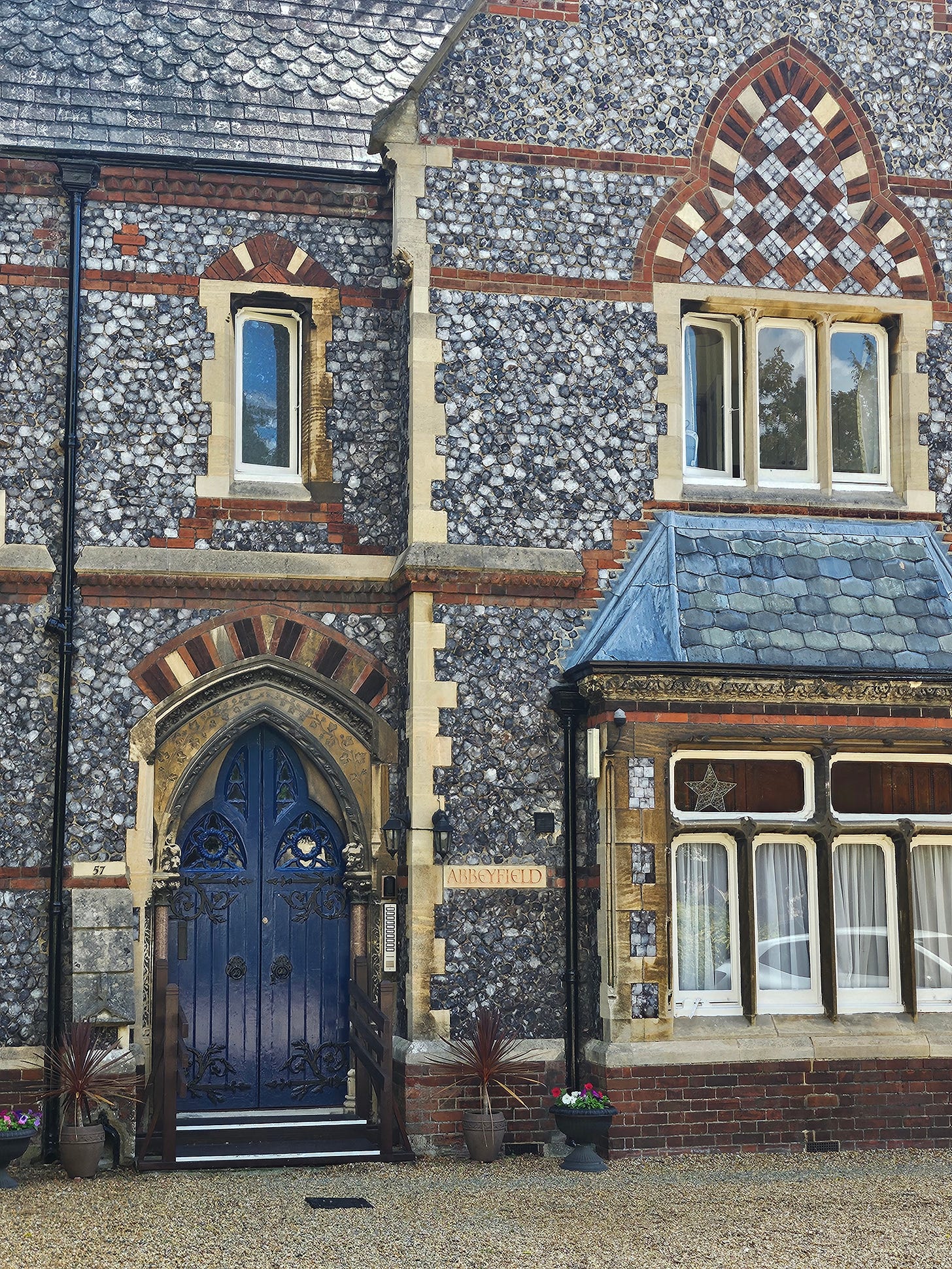
As we wandered from the Norwich train station to our AirBnB on our first day here we kept running into a black stone on the walls of older buildings. Sometimes it was polished and sharp-looking, almost like glass, and at other times it was indistinguishable from rounded river stones. What were we looking at?
Throughout history people have used the material closest to them for constructing their houses and outbuildings. In Norwich, they used flint, an abundant mineral found near the Norfolk shoreline. It is hard but easy to chip and shape, and has a lovely appearance.
Masons learned to knap or chisel the stone into various shapes to suit the needs and pocketbooks of their customers. In the States we think of flint knapping as a skill associated with American Indians. Indeed, Penny found a flint shard on the ground that could have been used as a hide scraper.
Flint was so abundant that we discovered old monastery walls at Norwich cathedral, broken down over time, exposing the flint that masons had used as filler between the more desirable cut sandstone used to finish the walls. We also came across flint shards inserted into the gaps in walls that utilized rougher flint stones, either as a filler or as a design element, or perhaps as a reminder to “waste not, want not.”
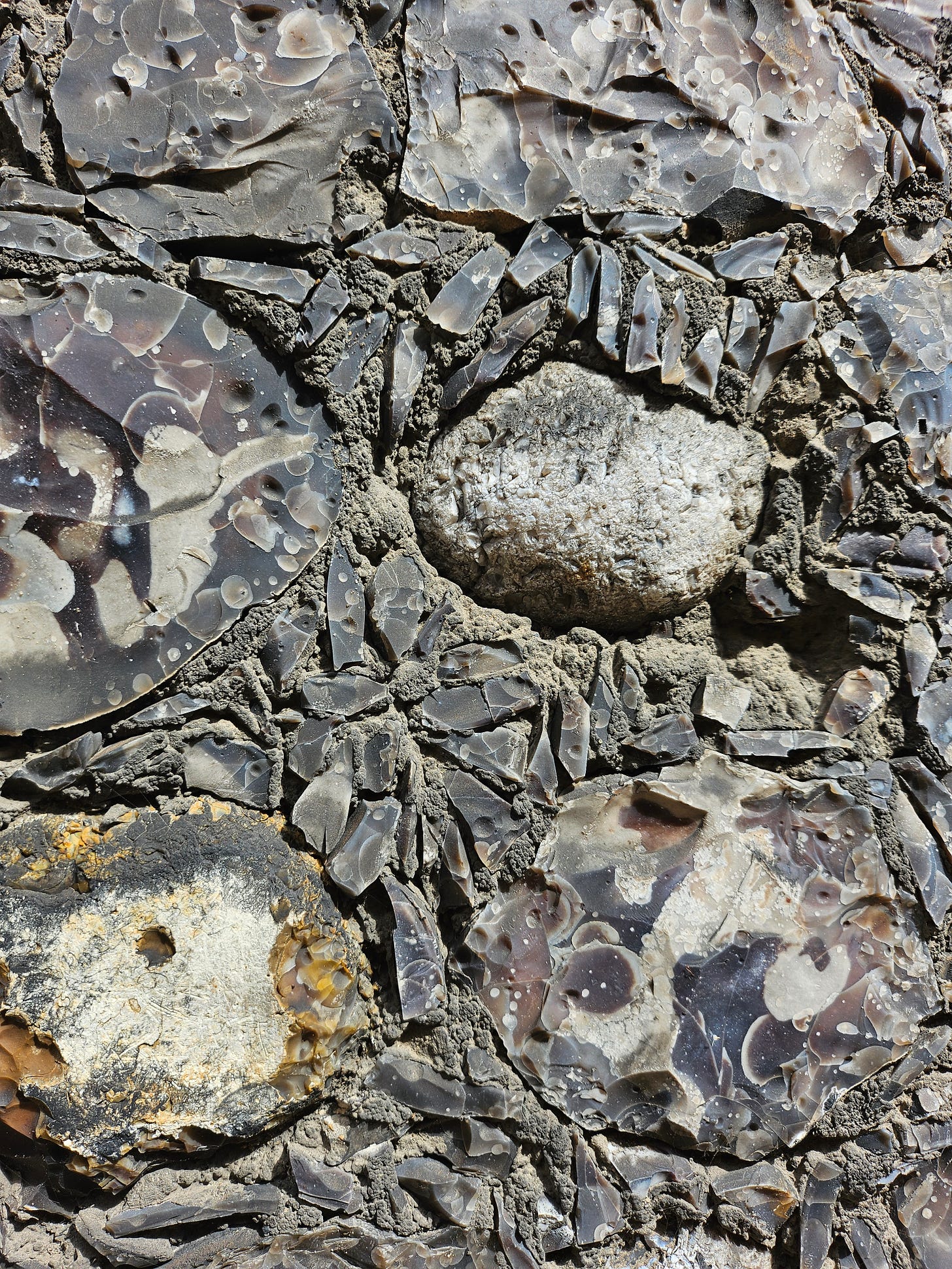
But the highest form of the mason’s art are the shaped cubes of flint in some of the buildings in downtown Norwich.
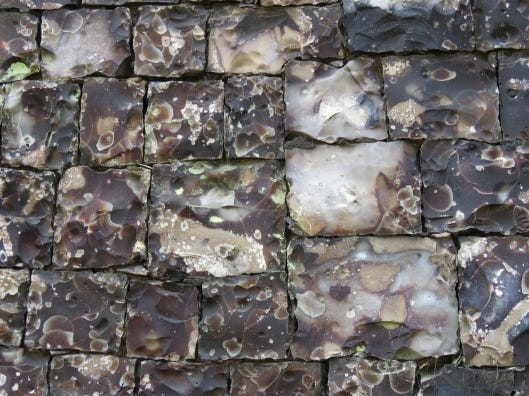




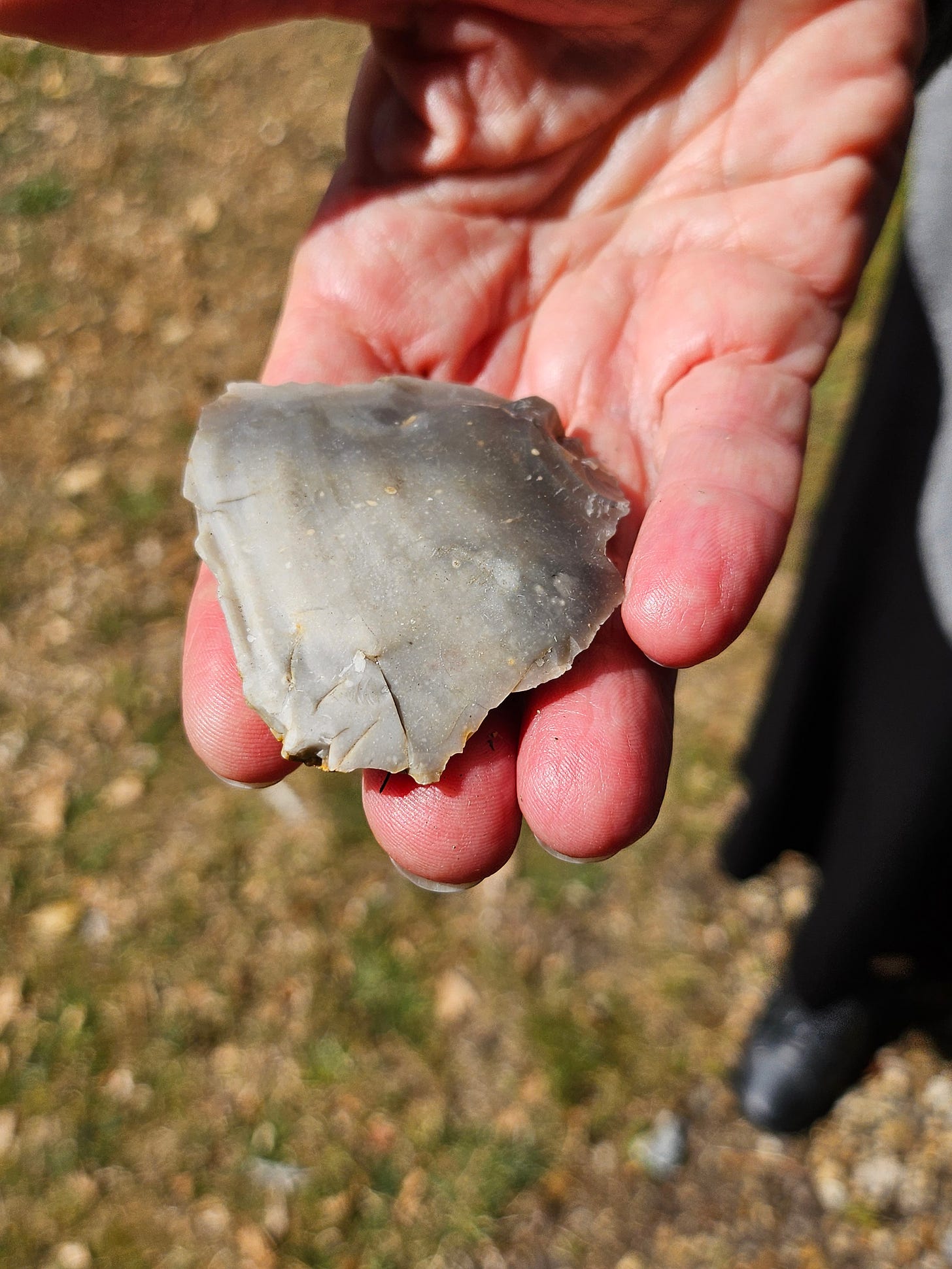
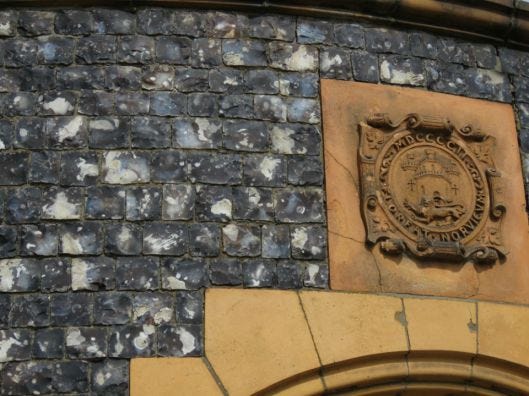
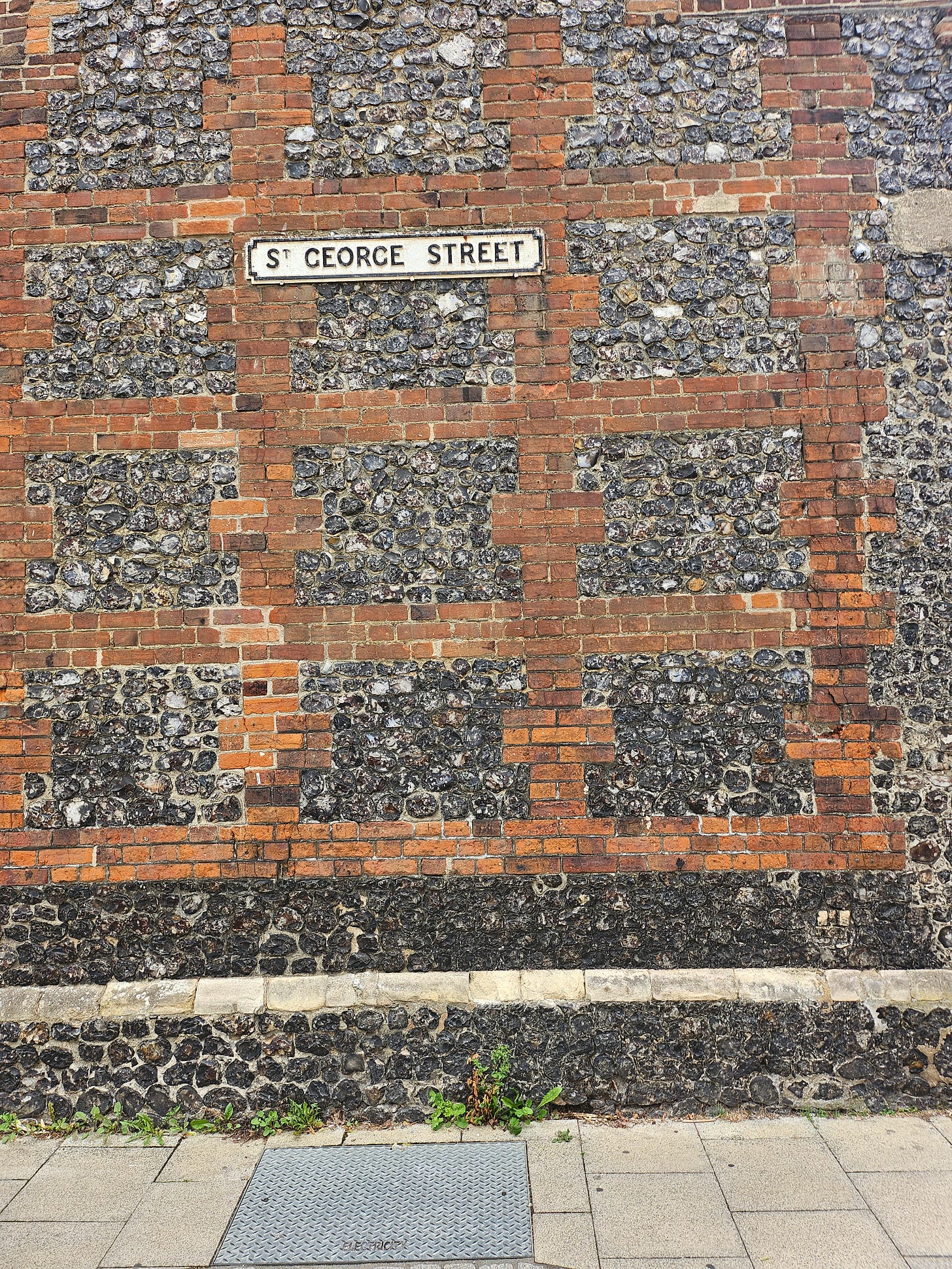

Beautiful and amazing.
I especially love the cubed flint wall, and the integrated designs of flint and brick.